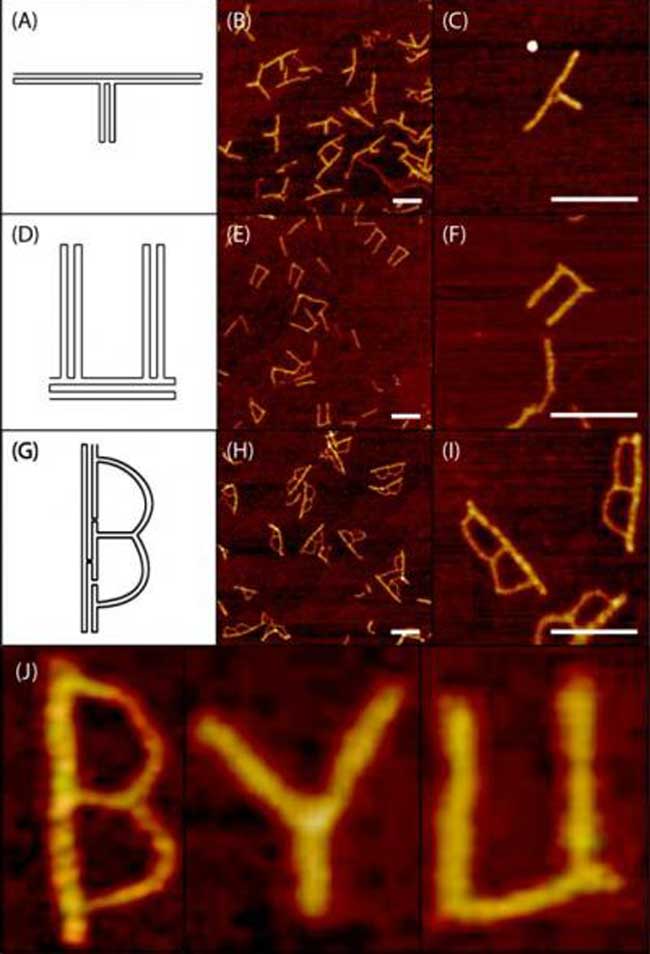BYU Written with DNA

Using a new technology, researchers at Brigham Young University have written BYU with DNA.
The letters are so small that hundreds of thousands would fit inside the period at the end of this sentence.
Adam Woolley and co-authors Elisabeth Pound, Jeff Ashton and Hector Becerril have devised ways to fold DNA into nanoscale structures that have multiple branching points. They also describe procedures to form nanostructures of various different sizes using the method of "DNA origami." This work has potential application in forming nanoelectronic devices.
The "small, thin structures with square junctions have potential applications in nanoelectronics, addressing the need for narrow, branched features for wiring," the researchers said.
The feat will be detailed in the October issue of the American Chemical Society's journal Nano Letters.
Get the world’s most fascinating discoveries delivered straight to your inbox.



